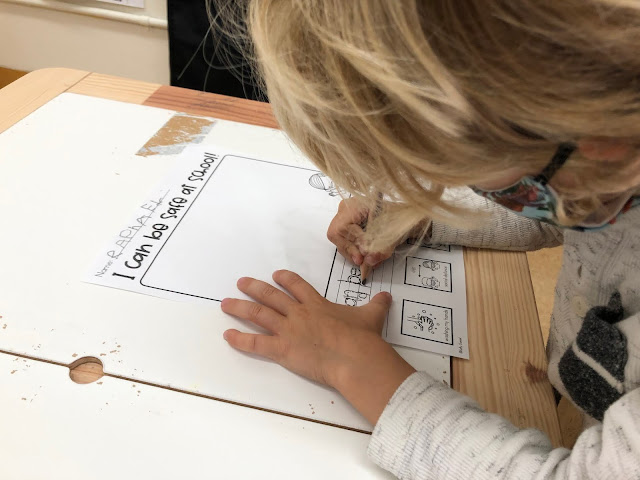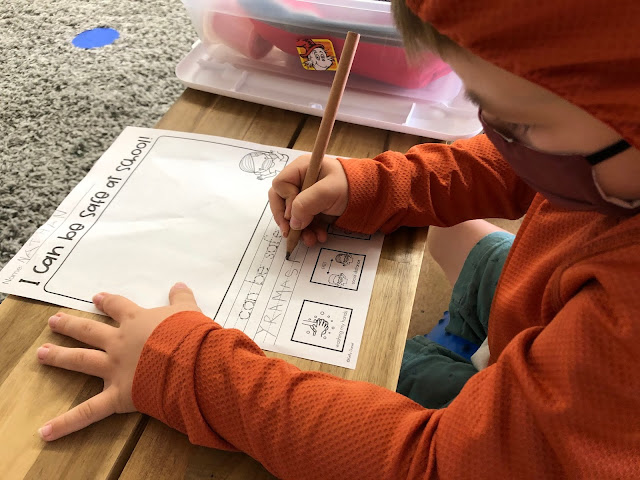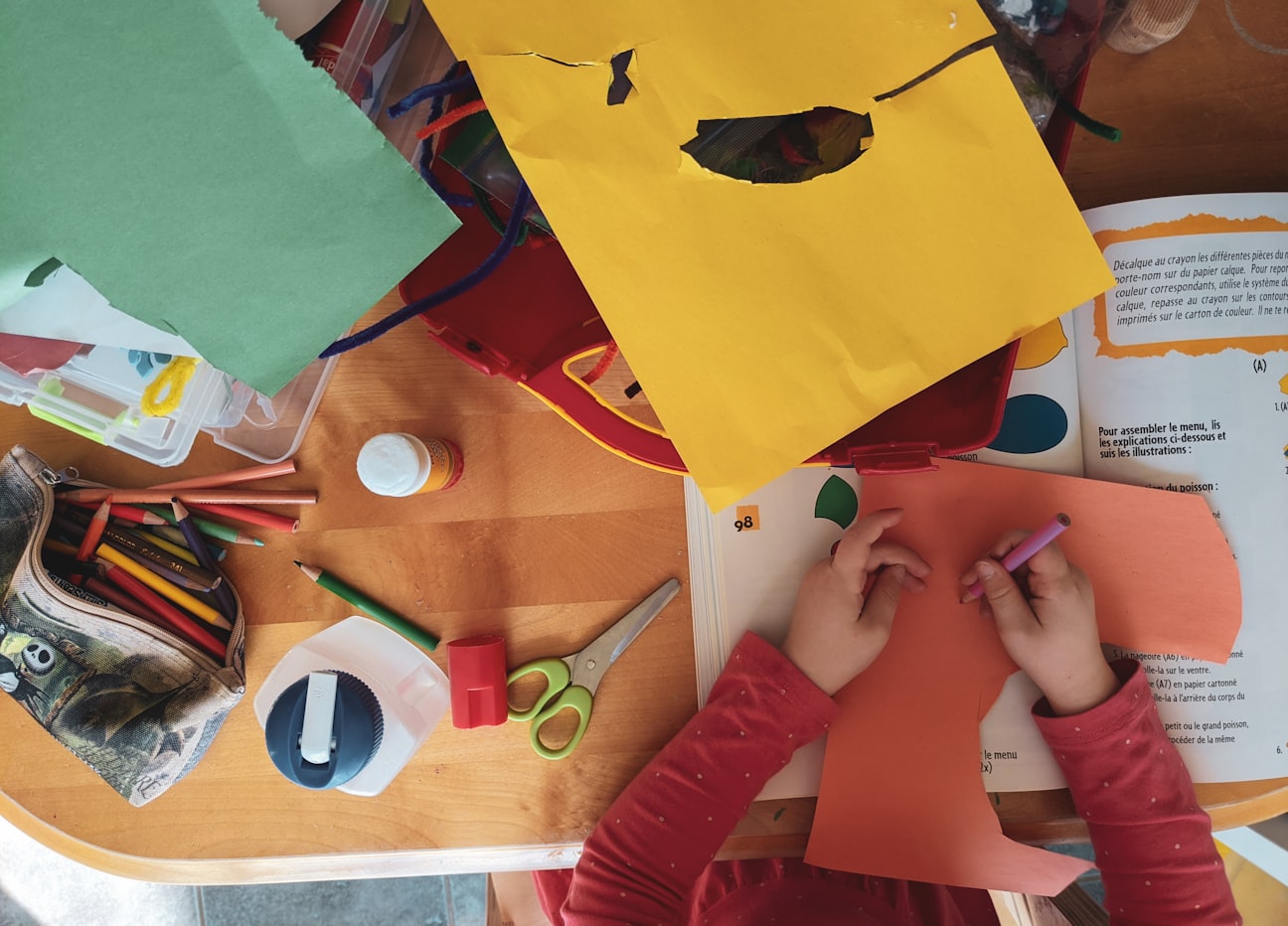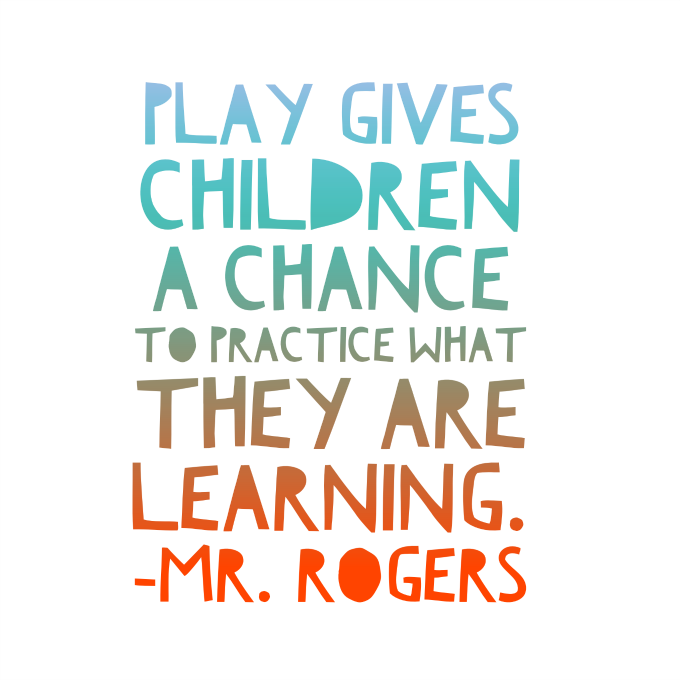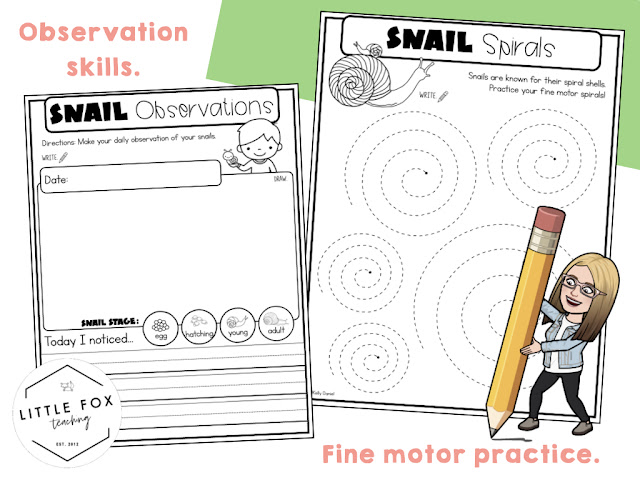August 15, 2021
Teaching Without Fear | BTS Covid-19 Activities
Here we all are...heading into yet another school year navigating the waters of Covid...and more recently the Delta variant. This year I'm heading back to work teaching kindergarten here in Texas - previously had been in San Diego, CA as an English kindergarten teacher. I'm so excited for this new chapter and to once again return to public school service.
This post shares a glimpse into what I had prepared last year as I began the school year at my previous school. We were among the first of the independent schools to reopen under strict protocols and offered both on-campus and virtual learning options. The majority of students returned to campus whereas I had a few that were full-time virtual...so, that meant hybrid teaching!
In all honesty, I wasn't too sure about how our school was going to be able to handle a hybrid model of teaching (i.e. offering both on-campus and virtual teaching) last year but it went surprisingly well. Being that I taught at a private school, we'd been able to make more accommodations and the school made renovations to our site that I recognize not all schools have the ability to do. In that sense we were extremely fortunate. That being said, being able to welcome students back to school during a pandemic leaves us teachers with a lot to figure out...even two school years in...namely how to go about having conversations about the virus without scaring our students.
As a kindergarten teacher these conversations are extremely important. In any normal year my class would have our routine lessons on hygiene and washing hands but because of having been under strict health guidelines and protocols (for being able to offer on-campus classes) washing hands was ever so important.
So, how did I do it? And how do I plan to do it again this school year?
Here is a glimpse at our first couple weeks of school as we tackle the conversations about germs and how to keep ourselves safe - whether learning at home or at school.
Start with Germs
- Sick Simon
- Germs vs Soap
Covid-19 Activities
Safe and Unsafe Choices Sort
"I can be safe at school by..." Writing
"I wear a mask because..." Shared Writing
How have you had success with your class discussing germs and Covid?
May 17, 2021
Advocating for Play in a Post-Covid Classroom
2020 taught us a lot as a teachers.
It taught us how resilient our students are (and how we are!), how to adapt within any given moment, and get back to the basics which is the social-emotional wellbeing of not only our class but with our colleagues and ourselves.
That's why I couldn't stress play enough - especially for kindergartners - and how it's ever more important as we all begin to welcome students back to campus.
We all know that as teachers we need to maximize academic time in our classrooms; that ever changing requirements and expectations are being placed on us by administrations and districts. However, in that mindset of pushing every minute for school work we forget that there is so much to be learned about purposeful play.
Purposeful Play
Connecting Play to the Common Core
Connecting Play to the Real World Workforce
Balancing Playtime in Kindergarten
Making the Case for Play
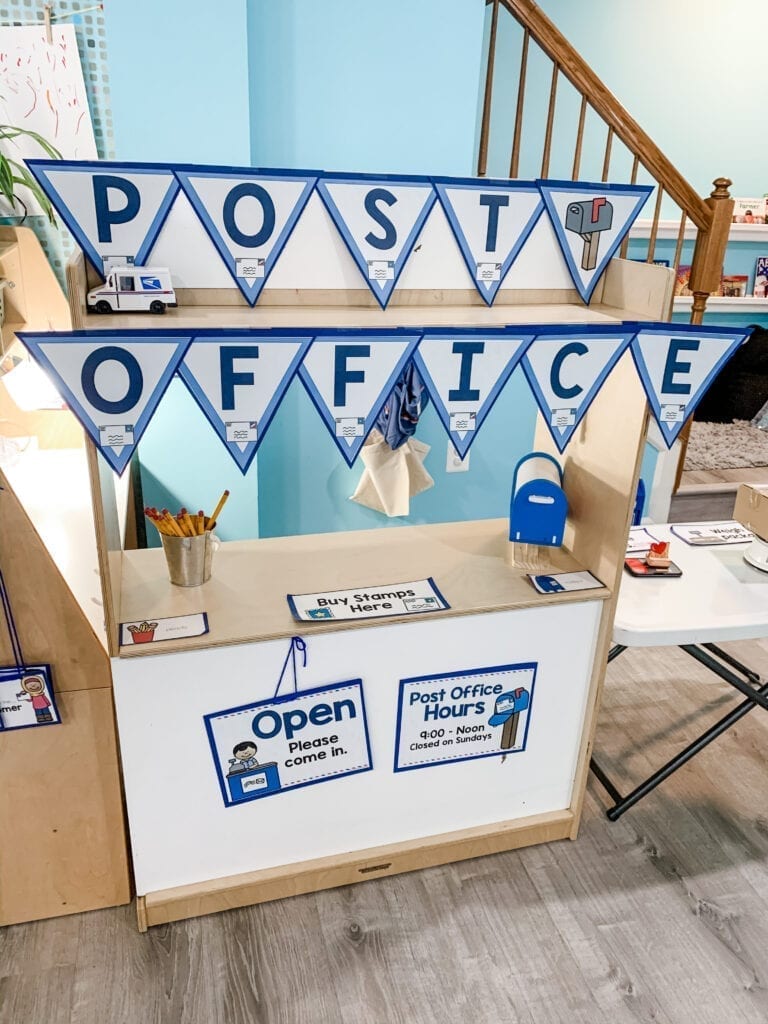 |
| source |
 |
| source |
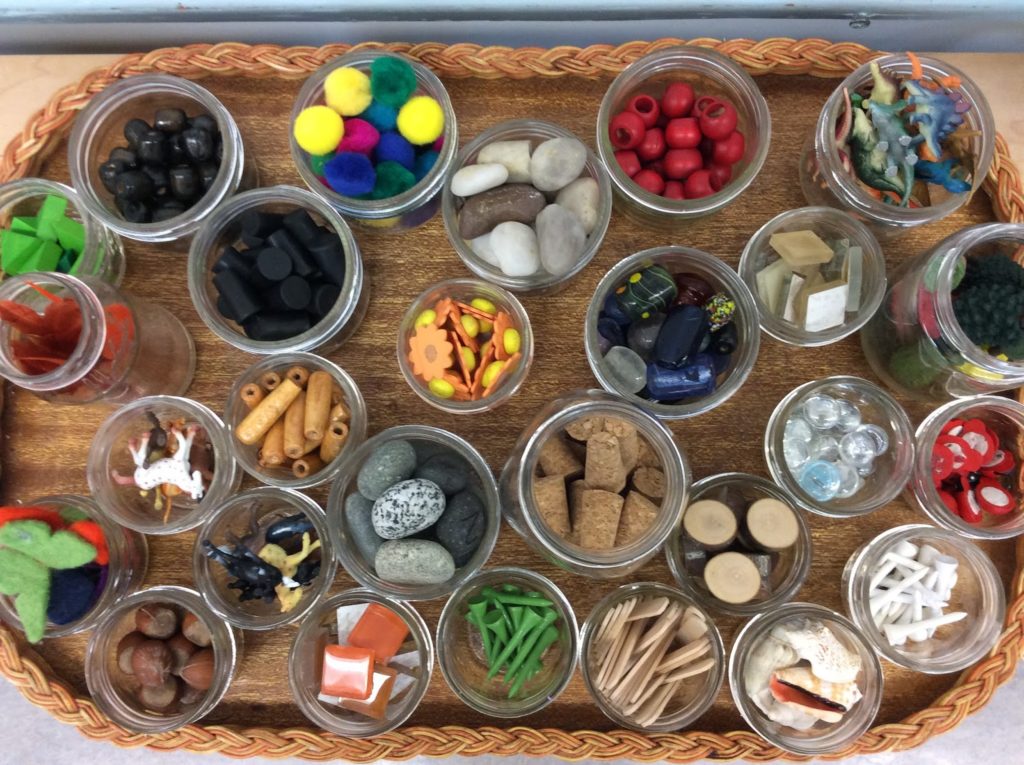 |
| source |
 |
| source |
Types of Play
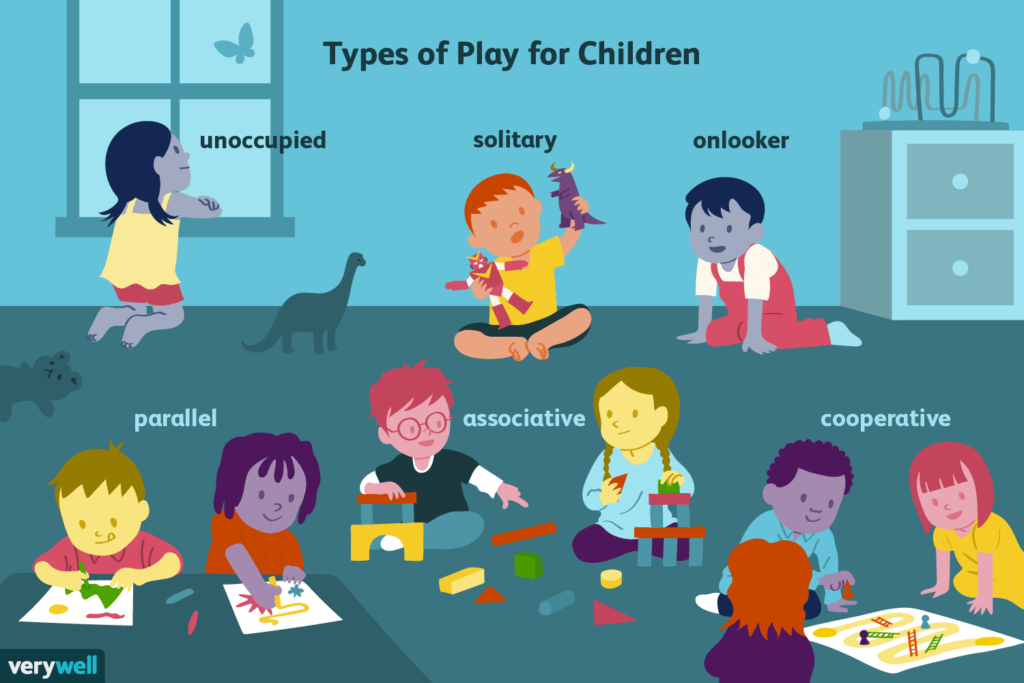 |
| source |
This is a great visual for the types of play you will see throughout the year and how each child goes through each one at different times. Our classrooms should be flexible and always be ready to change depending on the needs of the class and what is being studied/explored.
Establishing the "rules" for Playtime
Advocating Play in a Post-Covid Classroom
May 4, 2021
Teacher Appreciation SALE 2021
It's that time of year again where we can all do a little more to support our favorite teachers. Whether it be loving on your child's teacher in the coming week or helping out your teacher spouse, there's no greater way to show them you care than simply recognizing their hard work.
When Covid first hit this time last year, I remember my team and I had to scramble to somehow pull together weekly lesson plans that students could do from home...in a matter of mere days. It was one of the most stressful teaching experiences I've ever had, but much like any hard circumstance, I grew stronger from it. I continue to be so grateful to my amazing kindergarten team during that time and I couldn't be happier to see them back on campus and beginning to resume some sense of normalcy.
With that being said, teachers were hit hard during the pandemic and so much more was placed on their laps. For a brief moment the hard work and dedication of educators were put in the spotlight where, for once, we were collectively recognized for what we've been able to do and maintain while students were required to learn from home. But, somehow with the passing of time, that spotlight began to dim but we nonetheless continued to love on our students and families during a year that would look like no other.
Teachers Pay Teachers SALE
Eureka Math - Kindergarten
It's Springtime!
End of the Year Prep
Social Studies
March 25, 2021
A Study of Snails | Kindergarten Science Unit
Last year was the very first year I learned about snails alongside my students. I was excited for this unit - a part of our study of the garden/plants - because I had always taught about butterflies. Although fun, it's been done so many times and to have the opportunity to learn about snails was something new...even for me!
When I taught as a kindergarten English teacher for a French-American school, my French colleagues taught the science and French language aspect of this unit whereas I was responsible for teaching my ELA objectives, but through the theme of snails. You can read all about my lesson ideas and what I did in ELA for snails here.
But now that I'm back to being a SAHM I thought it would be fun to create something that other teachers could use or even parents who may be distance learning still or homeschooling. Although what my French colleagues came up with was so fun to observe, there would be no way I could get everything translated. So, I chose to create a workbook that covers the basics of this unit and the scientific skills that go with it!
Here's what's inside!
An introduction to snails!
Life Cycles & Anatomy
Recommended Watching
Making Observations & Fine Motor Practice
Choose your observation note style
A home observation & new class pet
- large aquarium tank with a ventilated covering
- dirt from outside
- collection of sticks, plants, and rocks (places for snails to hide are great!)
- a spray bottle of water to keep things moist inside
- snails love fruits and veggies (avoid citrus) and leafy green leaves
- they also love calcium (to keep their shells strong) so items like cuttlefish bones and egg shells are great to include in the tank
March 24, 2021
Summer Break Activity Packet + 1st Grade Prep!
Summer break will be here before we know it - ending yet another unforgettable year.
Today I am excited to finally share the final break activity packet as a part of my year-round bundle! Each break from school I always try to send something home with my students as a means to keep kids thinking and engaged with the concepts we've learned in class. Parents also really appreciate this packet because it allows them to see what their child is learning and have something to take on family vacations.
The "summer slump" can definitely impact a child and often us teachers see a little bit of a decline once school starts up again. I definitely think kids should be kids and enjoy their time away from school, but as the new year begins to come around I couldn't encourage parents to kickstart the year with some academic practice and review.
This Summer Break packet includes a variety of kindergarten ELA skill review as well as some first grade prep. My goal is to have my students review the main ELA skills we've spent a lot of time on throughout the year. These skills include:
- alphabet recognition (reading/writing)
- name writing practice (using 1 uppercase and the rest lowercase)
- phonetic spelling
- syllables
- rhyming words
- beginning sounds
- story sequencing/retelling
- creative writing
- sight word spelling (look, say, cover, write, check)
- writing planning sheet and first draft paper
- sentence structure review
- SEL activities
Pick up the bundle!
- Fall Break
- Winter Break
- Spring Break
- and Summer Break + 1st Grade Prep
March 19, 2021
Exploring Ancient Egypt
When I taught second grade we had an entire Social Studies theme on ancient civilizations. We explored maps and developed map reading skills, geography (continents and oceans), climates, and the other obvious stuff like culture, religion, language, and contributions or inventions. Learning about ancient cultures are always a hit with my students and today I'm excited to share the newest workbook for students!
Ancient Egypt
This workbook has three different pages for Egypt's geography: located on the continent of Africa, identify within Africa where the country is located, and label the seas/rivers and cities of note. Students use tools like word banks and keys to complete that section of notes.
Climate & Land
Inventions/Contributions
Recommended Watching:
Language & Culture
Additional Learning Opportunities
- Mummification & the Afterlife
- The Great Pyramids (fast forward to pyramids)
- Pharaohs and Cleopatra
Hey there!




